23 February 2011
On the causes of the high levels of loss in the Christchurch earthquake
Posted by Dave Petley
The level of damage from the Christchurch earthquake is exceptionally high, as the various galleries of images demonstrate. From a global insurance perspective this is likely to be one of the most expensive earthquakes of all time, and it is likely to rank as the first or second worst natural disaster in the history of New Zealand in terms of loss of life. It is very interesting to note that the Mw = 7.1 earthquake in September caused no loss of life, where as this Mw = 6.3 event may have killed 300 people. Clearly magnitude is not the only indicator of mortality risk.
Inevitably there is considerable, sometimes somewhat ill-informed, speculation about why the losses are so high. The key reasons are likely to be associated primarily with the exceptionally high peak accelerations, the location of the earthquake, the nature of the buildings, ground conditions, and the timing of the earthquake. So let’s take a look at those in turn:
1. The peak ground accelerations
Geonet has a map online of the measured peak ground accelerations from the earthquake. The unit here is in % g (gravity) – i.e. 100% g is the same as the acceleration due to gravity:
Although provisional, these are exceptionally high accelerations. At Heathcoat Valley primary school a peak acceleration of 220% g was recorded, and in the suburbs of the city 188 % g was recorded at Pages Road Pumping Station. These accelerations are likely to have exceeded the design strength of many buildings, even with the strict building code in place in New Zealand. Of course, the question then needs to be asked as to why a mw = 6.3 earthquake has generated such high levels of peak ground acceleration. There are probably several reasons for this:
a. The earthquake had a reverse fault mechanism (the September event at Darfield was a strike-slip event). This may have generated higher levels of shaking;
b. The earthquake is very shallow (5 km). Shallow earthquakes tend to generate very intense shaking over smaller areas, whereas deep earthquakes generate less intense shaking over larger areas;
c. The shaking may have been amplified by the ground conditions (see 5. below).
2. The location of the earthquake
As I noted yesterday, this earthquake is extraordinary in that it is in effect a direct hit on a major city. The map above shows that the area with high levels of shaking is quite small, but it so happens that Christchurch occupies this space. This is exquisitely bad fortune. That modern buildings such as this one (source) have collapsed so catastrophically is an indication of this:
3. The nature of the buildings
New Zealand has a very strong and intensely-imposed earthquake building code. Many structures have performed well given the very high levels of shaking. However, Christchurch is a city with many older masonry buildings, which were certainly not designed to be resistant to earthquakes in most cases. Building codes do require progressive retrofitting of older buildings, but this is often a slow and expensive business. Finally, it must be noted that building codes are designed to improve resistance to earthquake shaking, and unfortunately the magnitude of this improvement is finite. In this case the shaking may well have exceeded the design specifications in many cases.
It is notable that there have been no reports of children trapped in schools, in contrast to both the Wenchuan and Kashmir earthquakes. Schools have been targeted for seismic strengthening in New Zealand – for obvious reasons and because in many cases schools become the local centre for relief efforts. This appears to have been successful, which is to the credit of the authorities.
4. The ground conditions
The growing availability of imagery from the earthquake indicates that ground conditions may have played a substantial role. Particularly startling is this gallery from NZ Herald. The image below shows the stadium in Christchurch – note the many large pools of water:
This is indicative of liquefaction – i.e. the intense weakening of the sediments underlying the city. Liquefaction was a huge problem in the Christchurch in the Darfield event and appears to have been even more intense this time around. There will be huge damage to infrastructure (gas pipes, water pipes, etc) as a result.
Soft sediments can also tend to amplify shaking, so it may well be that a part of the reason for the intense shaking was a site effect associated with the sediments under the city. This is going to be a key issue in the aftermath of the earthquake as plans are drawn up to rebuild the CBD.
Given that this is a landslide blog, I cannot resist the temptation to include these three NZ Herald images of what appear to be mass movements of various types. I hope that more information will emerge about the landslides associated with this earthquake over the next few days:
5. The timing of the earthquake
Sadly, the timing of the earthquake may also have been a significant factor. The Darfield earthquake occurred at the ideal time of day from the perspective of minimising loss of life – i.e. very late at night when most people are off the streets. In this case the opposite is true – the earthquake occurred during lunchtime, when many people are out on the streets buying lunch. The collapse of many buildings into the street will have been a terrible hazard for those people, as the picture below (source) graphically illustrates:
Postscript – paying for the damage
A couple of people have asked about the how the clean up is funded. For residential property New Zealand has a residential earthquake pool called the Earthquake Commission (EQC). This is in effect a government-backed insurance fund financed through a levy on insurance premiums. In the event of an earthquake (or indeed a landslide) EQC will pay up to NZ100,000 for property damage and NZ$20,000 for possessions, with the remainder of the costs being covered by the insurance companies, so long as the house owner had insurance. For commercial property, insurance will cover the costs. Infrastructure costs are more complex – in many cases the government will foot the bill from reserves, but it may be that some infrastructure is privately only, in which case the picture is more complex. Of course the effect of all of this is to drive a huge amount of spending into the economy, which ironically can act as an economic stimulus in the long term.


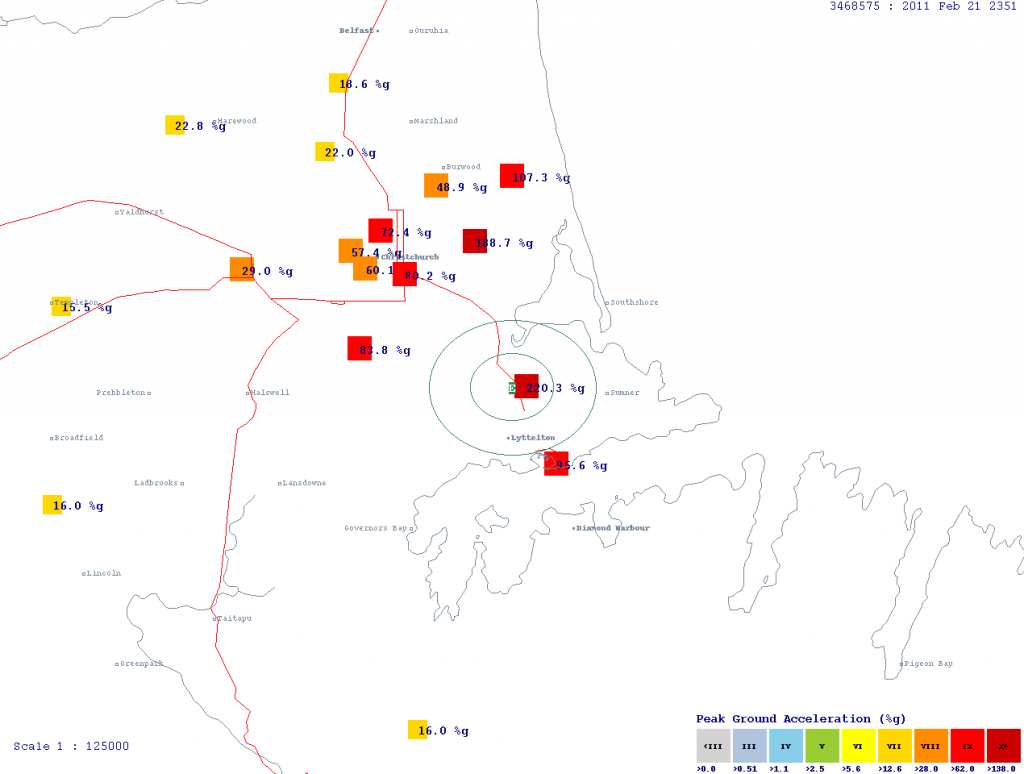
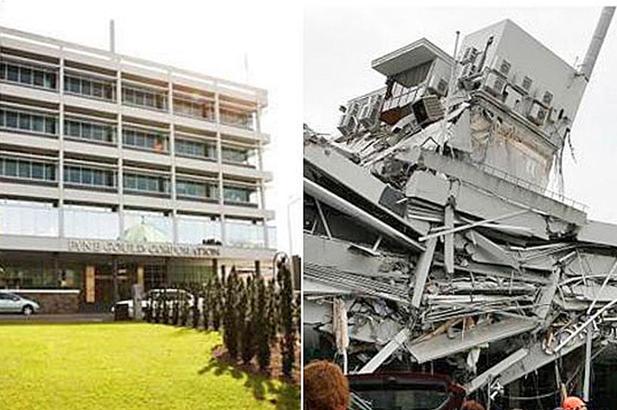
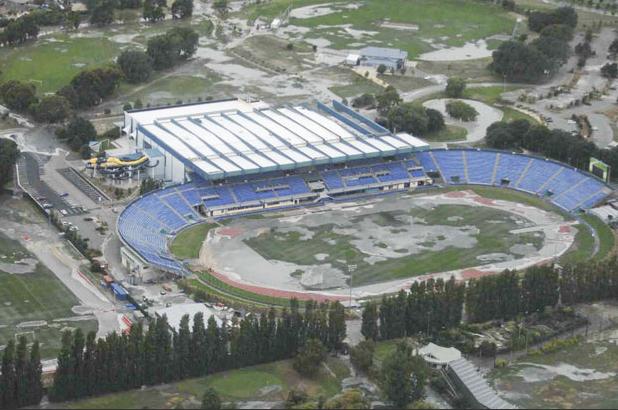
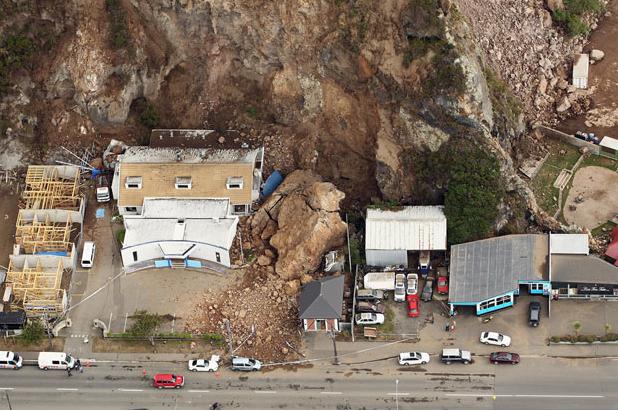
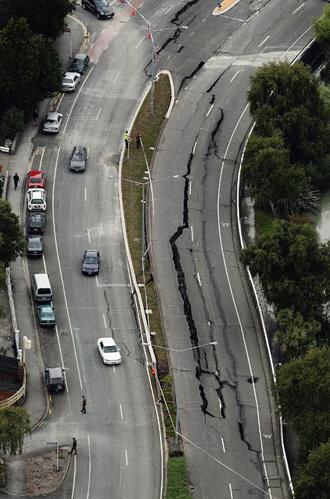

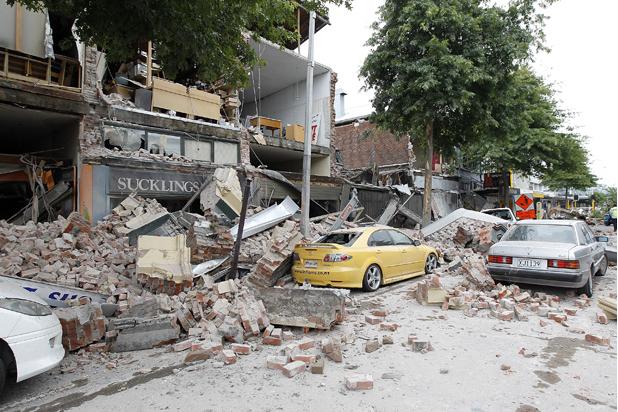
 Dave Petley is the Vice-Chancellor of the University of Hull in the United Kingdom. His blog provides commentary and analysis of landslide events occurring worldwide, including the landslides themselves, latest research, and conferences and meetings.
Dave Petley is the Vice-Chancellor of the University of Hull in the United Kingdom. His blog provides commentary and analysis of landslide events occurring worldwide, including the landslides themselves, latest research, and conferences and meetings.
[…] This post was mentioned on Twitter by In Engineering and ScienceSeeker Feed, Daves Landslide Blog. Daves Landslide Blog said: On the causes of the high levels of loss in the Christchurch earthquake: An examination of the key reasons why a… http://bit.ly/hYNxg2 […]
So, basically, the seismic agilities out performed the building frames’ strength resistance mechanisms. The buildings had no counter method to the shaking, outside of/in addition to initial force impacts. Nothing in the buildings or frames could relieve the stresses on the frames from lateral and uplift pressures.
This sounds like a core concept limitation, meaning the buildings and the building Structural Designers have a limited number of ways to counter applied force impacts. Anything wrong with giving the Engineers and Builders additional ways to counter building frame movements and relieve built up stresses in the frames from applied force impacts?
Continuous Structural Frame Reinforcing addresses lateral and uplift loading conditions and adds a secondary loads dispersal and dissipation outlet. The continuously reinforced frame can disperse and dissipate loads through the frames and through the continuous reinforcing tributaries at the same time, cutting in half the amount of physical work the frame has to perform under violent shaking conditions. Both the frame and the continuous installed reinforcing mechanism can have strength design and performance.
http://www.tor-eggs-torclosed-nets.org for how this recently proven advancement in Physics and Engineering works.
If you can find it, there’s a photo on stuff.co.nz showing where a boulder has rolled through a house, leaving a boulder-shaped hole.
http://www.stuff.co.nz/national/christchurch-earthquake/4697206/Two-feared-crushed-by-boulders-in-Lyttelton
Probably not the best example of a modern building in 2.)
The PGC building has been reported as being constructed in the 1960’s.
The 1960s PGG was apparently retrofitted 8-9 years ago (I found on google this morning-sorry don’t have source handy), so the original design predates major code developments in the 1970s and 1980s, but you would’ve hoped the retrofit would bring up to (or close to) modern standards.
I’m looking for comparable info (date of construction and any retrofits) of the CTV building if anyone can help out?
Really appreciated this blog post, thanks.
Continuous frame reinforcing can be retrofitted to existing buildings.
this is Dennis from Hao Sheng Silicone Products Factory. Our factory are major in silicone products, like phone/MP3/Mp4 covers, energy wristbands, negative-ion titanium necklaces ect. In order to feedback our clients, we are doing promotion now, welcome to purchase products from us.
Also OEM projects welcomed: Custom size and designs are avaiable, including: Deboss/engraved silicone bracelet, debossed with colored filled silicone bracelet, embossed silicone wristband, emboss with printing silicone bracelet, printing silicone bracelet, glow in dark silicone bracelet, multicolors silicone bracelet, 2~3 layers bracelet, etc.
Hey dennis, do you think we will all make sure, doubly sure, that we NEVER, ever buy any of your products as a result of you deciding to vandalise these fascinating blogs?
Is there a good time to experience an earthquake? Asleep in your bed or awake and mobile.
Fig 1 pancake failure ugly
Fig 2 Stadium seems to have responded well (deep foundations) to field shaking? Field: Water from liquefaction or water pipes?
Fig 3 Bigger rockfalls than a boxcar Dave … poor choice of location etc.
Fig 4 Slope failure but looks gook given apparent conditions
Fig 5 Watch for falling rocks
Fig 6 Ugly.
Certainly one of the larger very shallow quakes to hit at or near a major city. Keep em in our prayers.
Codes: in the 70’s NYC codes were viewed by the Structural Engr’s as OK since in their view the wind loadings were felt to be comparable to anticipated ground acceleration loadings. Several studies by the earthquake specialists in the 70,s for dam studies etc.,began to point to a greater acceleration risk than expected. Took a combination of factors to recognize that one size would not fit all. New code began to add considerations for recurrence interval, subsurface conditions, framing, shear walls and importance factors. However max expected acceleration was the kicker that increased significantly. Took a bit to put in place and some more time before it was the std. So today I would be surprised if 10-15 % of the high / mid-rise structures comply. Emergency shut offs for gas, water, steam lines may not yet be in the code. I think elevators will comply.
The larger the problem the slower the fix in terms of self interest.
PS: Several additional factors have surfaced( :-)) since the early 70’s including stressed rock deposits and newly mapped faults or recent activity on older faults in manhattan and extensions.
As the bottom photo in the article shows, buildings come apart at the seams, and don’t yet include continuous frame reinforcing.
With respect to the higher accelerations recorded in February’s quake compared to the Darfield event, I agree that the depth difference and fault type add to part of the disparity. I looked on the Geonet website and found an image showing acceleration values for Darfield (max i saw was at 125%g). But could it be simpler to explain the 1g difference between the quakes? Superimposing the February 22 acceleration contour map onto Google Earth shows the 200%g isogram has a rough diameter of 3.5 km, and the 1g isogram is roughly 6 km diameter.
Looking at the epicenter location for Darfield, were any accelerometers lying within that epicantral distance?
Thanks for this great explanation. I grew up in Christchurch and was living there two years ago. The damage is hard to look at.
I wanted to note for people not familiar with Christchurch that the pictures showing large cliffs are existing cliffs that were already there, however the pieces that have broken off them are massive. Most of these large cliffs don’t have houses etc right at their base as small rocks routinely break off continuously. In a few places there are older homes that I’ve always thought were dangerously close to the cliff edge – some of these have lost pieces of their property off the cliff edge, I hope these houses will be safe
[…] last year. Director of IHRR, Dave Petley, has covered the event extensively on his blog — On the causes of the high levels of loss in the Christchurch earthquake – identifying the high accelerations of the earthquake (up to 220% g) that would exceed the […]
[…] not really a landslide story of course, but on a related issue, as I mentioned in my earlier post liquefaction has been a very major problem in this earthquake. This image from MSNBC does […]
It was probably a very good thing that the school students would have all been still at lunch – our school lunchtime is from 12.00 -1.00 (and unless it is raining all students are expected to be outside of the buildings between those times).
Schools most likely would have ‘officially’ closed and then dismissed students from the school grounds following the EQ.I am not sure at this stage what the damage is to the majority of schools in CHCH. My gut reaction is that schools in the Eastern suburbs will have suffered extensive damage……
Actually, the general procedure in an emergency like an earthquake is for the school to hold the kids until they can safetly be picked up by their parents. Don’t want kids walking down potentially damaged streets with buildings that could potentially fall down on them.
A couple of notes to add to this good explanation. We were fortunate enough to have been given the opportunity to host a seminar by Mark Quigley from the University of Canterbury in January this year.
1. Christchurch was essentially aseismic until the sept 4 earthquake, yet earthquake building codes were still used. Lesson learned, nowhere on a plate boundary is safe.
2. buildings were still under repair for damage from the sept 4th earthquake and therefore that weakening did not help them withstand the Feb 22nd quake.
3. The faults were previously not known because a) the region was aseismic, b) they are reactivated Cretaceous faults created by the different plate boundary (an extensional one not a compressional one), not new ruptures so they not behaving exactly as textbooks would predict, Christchurch is built on an alluvial plain, and so until the faults ruptured recently, there was no surface expression of them – and the surface expressions we are seeing today will quickly disappear (on a geologists timescale).
4. The volcanics on Banks Peninsula (which are Miocene) overlie the fault that moved on Feb 22nd, demonstrating it is an remobilised ancient fault – further energy from that rupture probably reflected off the volcanic material back toward the city.
I am looking forward to the session(s) on these earthquakes that will undoubtedly be held at AGU this year. I am sure we will learn a lot.
[…] from underlying basaltic rock. One good early summary of possible contributing factors is at The Landslide Blog. In time we’ll see more detailed accounts of precisely why this earthquake packed such a […]
Dave & others, as you may know in the US we’ve mined the water and oil to the point of subsidence. With all the liquefaction occuring has there been any recorded subsidence in Christchurch and surrounding area.
Any subsidence Jeremy ? Yes, plenty. Anywhere near road surfaces where liquefaction occurred adjacent subsidence can be found with asphalt still holding in some cases and splitting in others. I have a photo of my wife standing in such a subsidence (about knee deep) in Merivale just opposite the Mall car-park taken three days after Feb 22. In other more eastern suburbs (nearer the coast) there are photos of cars almost submerged nose first in deep depressions & I suspect they are subsidence holes resulting from liquefaction
My experience in Civil Design was in Alaska, U.S; where there was frost heave and liquefaction (high water tables in summers). Although I haven’t included details and illustrations on my website on how continuous installed steel strapping might benefit roads and bridges, I believe it is a design factor worth looking into. Similar to how round-bodied steel reinforcing helps retain concrete and masonry structure’s shapes, flat-bodied steel strapping should be able to help a road maintain it’s shape better under various lifting and sinking conditions. Thoughts?
[…] on buildings). The impact of a M6 or M7 earthquake could easily be like either of the Canterbury or Christchurch earthquakes depending on the location of the epicenter. A smaller shallow earthquake probably […]
[…] with the most intense shaking occurring in places with the highest population density. This caused major damage even though the Darfield quake released approximately 16 times the energy of the Christchurch […]